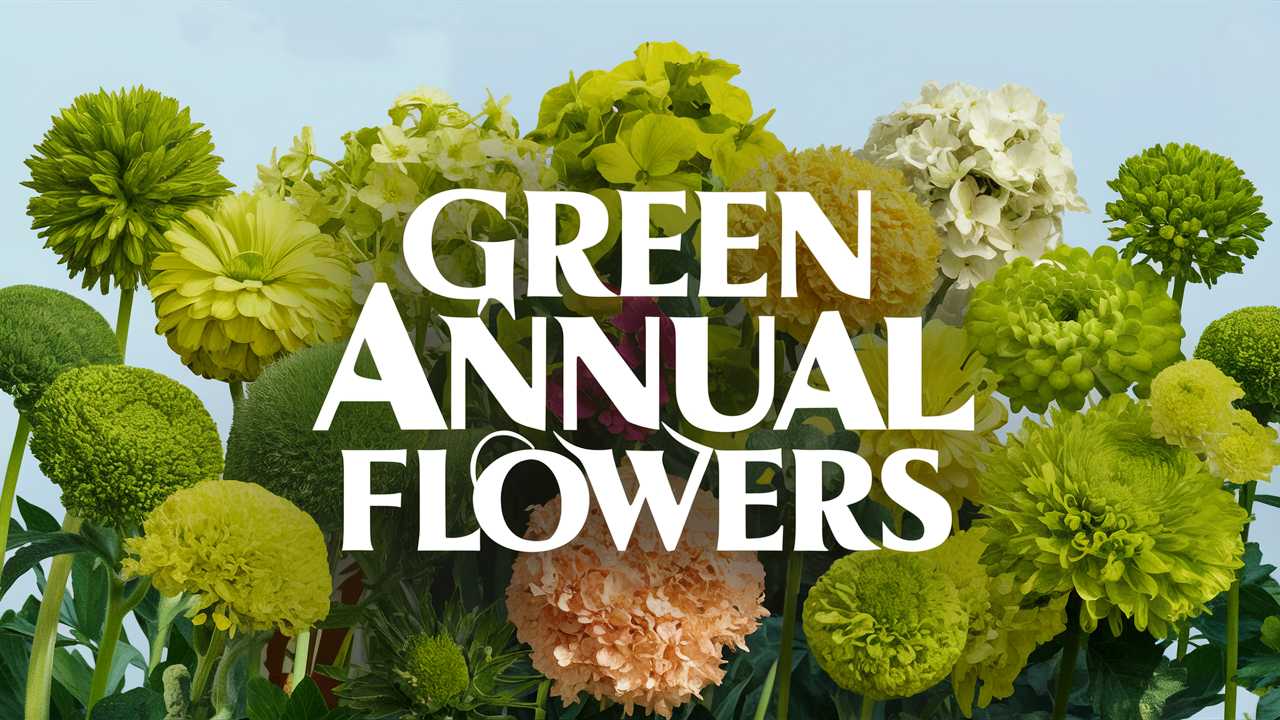Join me as we explore some of the standout green annual flowers that are sure to captivate your imagination.
Bells of Ireland

The Bells of Ireland, or Moluccella laevis, is a charming and highly distinctive annual flower known for its tall, spire-like vertical growth and vibrant green “bells” that encase tiny white flowers. This plant, native to Europe and parts of Asia, serves as an excellent focal point in any flowerbed or arrangement, providing a striking vertical element that is unparalleled.
Bells of Ireland thrive in full sun and well-drained soil, making them a garden favorite for those who enjoy the robust green tones they offer. Additionally, they make for excellent cut flowers due to their longevity and unique shape. Incorporating Bells of Ireland into your garden not only adds visual interest but also creates a delightful conversation starter, reminding viewers of lush European gardens.
Amaranthus

The Amaranthus genus is renowned for its unique, lush green foliage and the striking appearance of its flowers. With a variety of species, the most popular include Amaranthus caudatus, commonly known as love-lies-bleeding. This annual produces drooping, feathery flower heads that create a dramatic visual effect, often in a combination of green with hints of deep burgundy. It thrives in sunny locations and well-drained soil, making it relatively easy to cultivate.
Amaranthus isn’t just visually appealing; it also holds cultural significance. In historic times, this plant was revered by the Aztecs and has deep roots in traditional cuisines, being a source of edible seeds. Beyond its culinary uses, Amaranthus is also a favorite in floral arrangements due to its longevity when cut. By incorporating Amaranthus into your garden, you not only celebrate its rich history but also invite attention-grabbing beauty to your landscape.
Amaryllis

While typically known for its vibrant blooms, the Amaryllis can also adorn your garden with unique green foliage. The Amaryllis belladonna, or the lily of the bell, features lush green leaves that bring a hearty, robust quality to any arrangement. It may surprise you to learn that the leaves themselves can serve as a subtle yet striking backdrop for brighter colors in your garden.
Growing Amaryllis is relatively straightforward. Plant the bulbs in well-drained soil, water them adequately, and ensure they receive plenty of sunlight. Moreover, these plants often produce additional offshoots, which can create an even more opulent display year after year. Incorporating Amaryllis into your garden will not only enhance the aesthetic but also contribute to a healthier ecosystem, attracting pollinators and beneficial insects.
Angelica
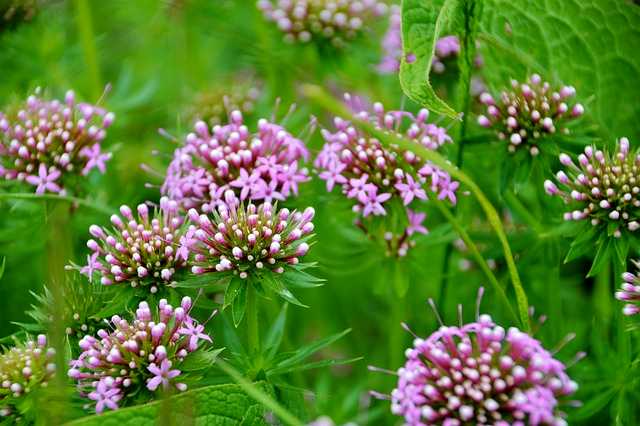
Angelica is a fascinating green annual that can introduce an air of mystique to your garden. Known for its towering flower stalks and broad, compound leaves, Angelica archangelica can reach impressive heights, often standing upwards of five feet tall. It prefers moist environments and thrives in partial shade, making it ideal for garden spaces that may not receive full sunlight.
The striking umbels of tiny, intricate flowers form atop the tall stems, often appearing in greenish-white hues. Angelica is more than a pretty face; its leaves and seeds are edible and have been used in both culinary applications and traditional medicine for centuries. Whether you’re making homemade confits or tinctures, Angelica offers a unique blend of ornamental and practical.
Anthurium
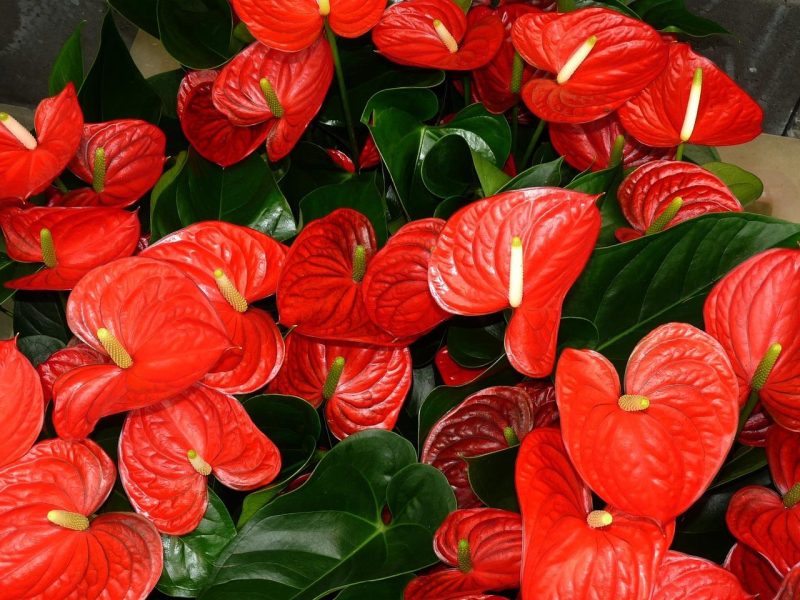
Anthurium, with its glossy leaves and unique spadix flowers, is an often-underappreciated gem among green annuals. While the flowers can come in a range of colors, many varieties maintain deep green foliage that can beautifully complement any garden or indoor space. These tropical plants thrive in warm, humid conditions, making them perfect for those in temperate and subtropical climates.
What makes Anthurium particularly intriguing is the wide variety of shapes and sizes it offers. Whether you opt for the traditional heart-shaped flowers or go for the elongated varieties, each brings a unique flair to your collection. Caring for Anthurium involves regular watering and indirect sunlight, ensuring their leaves remain lush and vibrant. They’re also known to purify the air, adding yet another benefit to their impressive repertoire.
Chrysanthemum

Chrysanthemums are often synonymous with autumn, bringing warmth and richness to gardens and homes alike. Though usually associated with vibrant colors like yellows and reds, many cultivars provide stunning green foliage that enhances their overall appearance. The green leaves of chrysanthemums create a lovely contrast to the array of blooms they produce and maintain a lush garden appearance even when the flowers aren’t in peak bloom.
These perennial plants are surprisingly hardy, adaptable to various growing conditions, and can thrive in both short and long daylight hours. With proper care, they return year after year, bringing a signature seasonal charm to any garden. Including chrysanthemums in your planting scheme affords you a bountiful texture while also serving as a key player in pollinator-friendly gardens.
Cockscomb
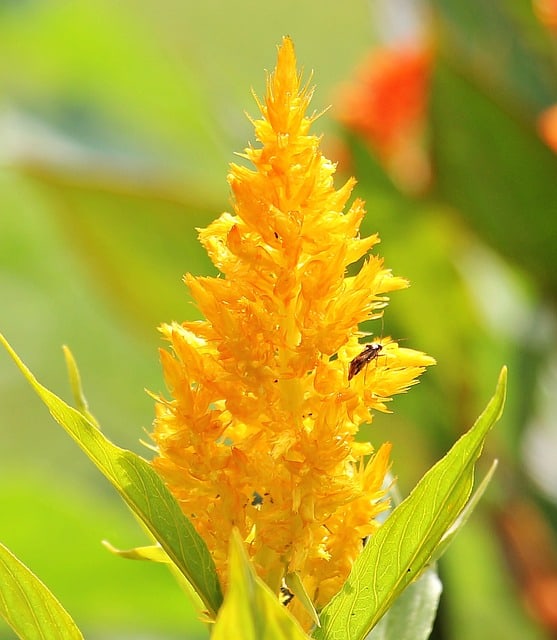
Cockscomb, or Celosia argentea, is a fabulous green-blooming annual flower that is typically recognized for its flaming, crested flower heads. However, some varieties offer a unique green color, providing a fresh alternative to the more brightly colored versions. The texture resembles that of velvet or a coral reef, making it a visual treat whenever used in gardens or floral arrangements.
Cockscomb prefers full sun and thrives in warm conditions, making it a favorite for summer annuals. This remarkable plant draws attention not only for its color but also for its unique shape and texture, making it an excellent choice for adding variety to your garden. With minimal care, Cockscomb can provide a stunning and exotic appearance, making it a must-have for those looking to make a statement.
Hellebore
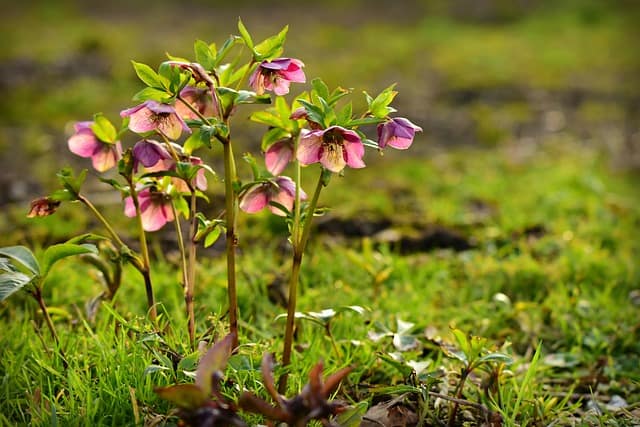
Hellebores, particularly the Lenten Rose (Helleborus orientalis), are an often-underappreciated variety of green flowers that grace gardens with their presence. These perennial plants bloom in late winter to early spring, offering the rare treat of greenish flowers contrasted with dark foliage. Their ability to bloom while other plants are still dormant makes them a welcome sight against the remaining winter landscape.
Hellebores thrive in partial to full shade, making them ideal for woodland gardens where they can naturalize and spread over time. They are low-maintenance and tolerant of diverse soil types, making them suitable for various environments. Adding Hellebores elevates your garden aesthetic while also supporting early-season pollinators that emerge at the first signs of spring.
Jack-in-the-Pulpit (Arisaema triphyllum)
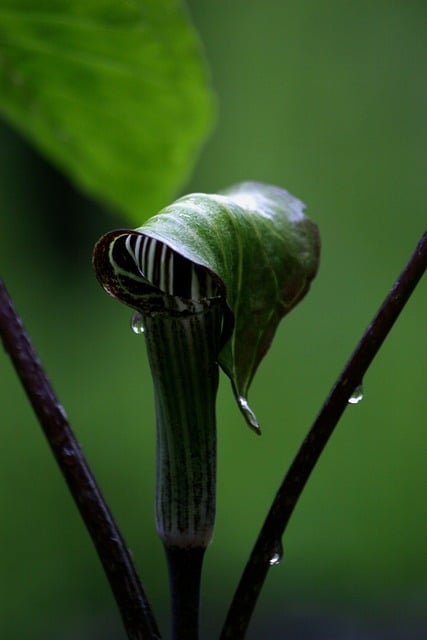
Jack-in-the-Pulpit (Arisaema triphyllum) is one of nature’s curiosities, offering distinctive green blooms that add intrigue to shady spots in your garden. This perennial plant features an unusual floral structure: the flower consists of a colorful spathe that encloses a spadix, resembling a tiny pulpit, hence the name. Most notable is the fact that the flowers’ lush green tones blend beautifully with the plant’s striking foliage.
Jack-in-the-Pulpit thrives in moist and shaded environments, making them an excellent choice for fern-friendly gardens or spots under established trees. Their striking appearance and interesting form make them a conversation piece. Planting Jack-in-the-Pulpit can create a woodland ambiance that feels both enchanting and serene.
Lisianthus

Lisianthus blooms, also known as Eustoma, are characterized by their captivating bell-shaped flowers, which come in multiple colors, including striking shades of pastel and jewel tones. However, it’s the lovely green foliage that accents these blooms beautifully and contributes to visual balance in floral arrangements and gardens alike.
These annuals thrive in full sun and well-drained soil, making them relatively easy to care for. When harvested for bouquet work or arrangements, Lisianthus maintains its charm for a long time, offering both beauty and durability. Incorporating them into your garden design not only brings versatility but also a touch of elegance that can elevate any setting.
Nicotiana
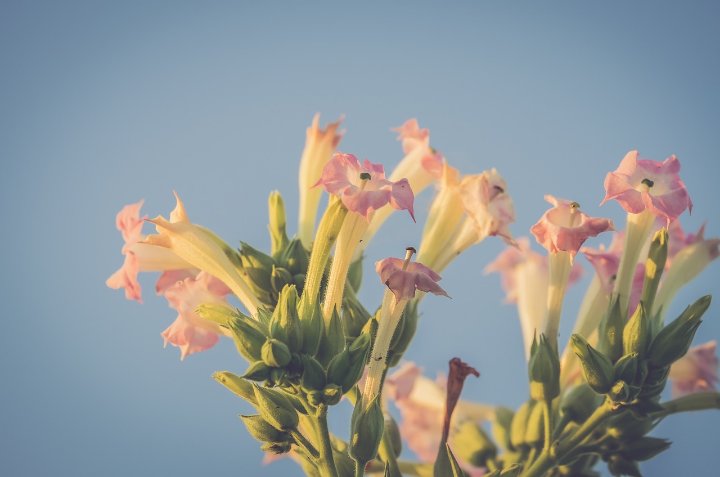
Nicotiana, commonly known as flowering tobacco, is a genus that provides delightful green flowers, adding a soft touch to any garden space. Their gentle scent and delicate blooms are often used in evening gardens due to their sweet aroma that becomes more pronounced at night. While they come in varying shades, many varieties feature lush green foliage that acts as an ideal backdrop for their charming blooms.
These annuals are relatively low-maintenance and thrive in both sunny and partially shaded locations. Nicotiana attracts pollinators, making them an essential addition to any wildlife-friendly garden. Their ability to bloom over an extended period makes them a favorite among gardeners, providing consistent beauty from spring until the first frost.
Ranunculus

Ranunculus is another captivating choice with its elegant, abundant blooms that can bring a multitude of colors, while the foliage often features a rich green tone. Known for their stunning displays, Ranunculus does well in cool spring weather and can thrive in sunny and well-drained environments. Their distinctive rosettes or double flowers can serve as the centerpiece of any floral arrangement.
The unique ruffled petals are often sought for their exquisite beauty, but the foliage itself can be just as striking. Green leaves act as a lush backdrop for the stunning blooms, adding depth and texture to any garden setting. Grow them in clusters for a bountiful display, or use them creatively in containers to brighten patios and walkways.
Sunflower

Sunflowers are undeniably iconic, but it’s worth noting that they provide beautiful green foliage that complements their vibrant yellow blooms. The Helianthus annuus variety features broad leaves that reach out towards the sun, showcasing a robust and lively presence in any garden.
Sunflowers are incredibly easy to grow and excel in direct sunlight, making them perfect for those looking to add instant brightness to their outdoor spaces. They can serve as a natural privacy screen or windbreak when grown in rows. Their cheerful appearance elevates the mood of any garden while attracting pollinators and birds, creating a lively ecosystem around them.
Viburnum
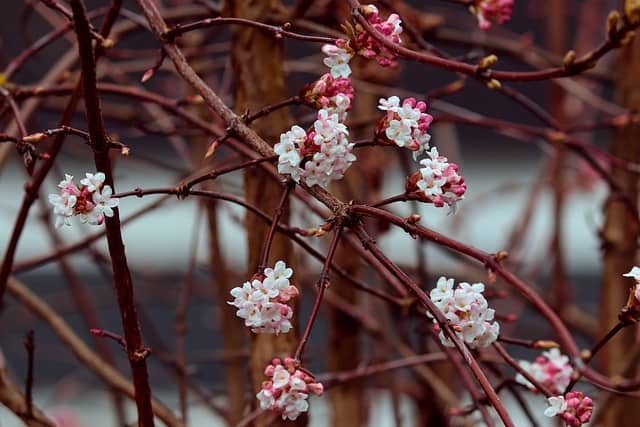
Viburnum is a versatile genus of flowering shrubs that can add a lush, green element to your garden while also producing striking clusters of flowers. While many Viburnum varieties offer charming flowers in shades of white and pink, their hearty green leaves serve as a lovely backdrop that brings harmony to the overall garden aesthetic.
These shrubs thrive in varying soil types and conditions, making them an adaptable choice for gardeners of all levels. Viburnum also attracts bees and other beneficial insects, making them valuable in promoting biodiversity within your space. Incorporating Viburnum into your garden will not only enhance the visual appeal but also contribute to an eco-friendly environment.
Zinnia
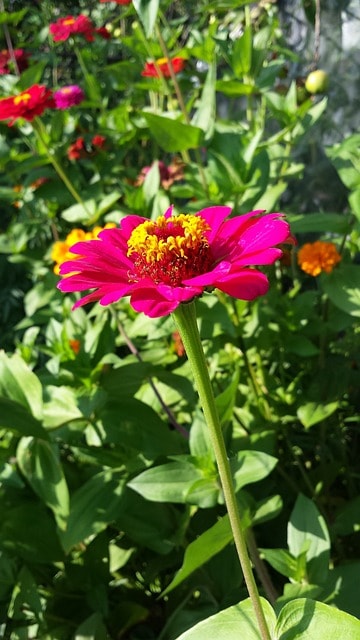
Finally, we arrive at the vibrant and cheerful Zinnia. While they boast radiant blooms in an array of colors, the lush green leaves are equally important for creating a balanced garden aesthetic. Known for their hardiness and ability to thrive in various conditions, Zinnia plants produce flowers that can bloom from early summer through the first frost.
Zinnias prefer full sun and well-drained soils, making them easy to cultivate in a range of settings, from borders to containers. Their carefree nature and eye-catching floral display draw in butterflies and pollinators, creating a lively atmosphere. Using Zinnias in your garden adds a delightful touch and ensures a continuous show of color and life.


